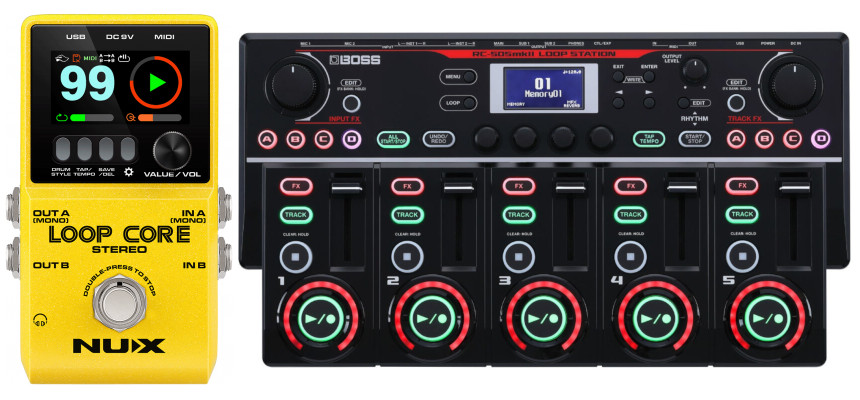
After discussing the recording of audio sequences in our previous article, let's now have a look at loopers. But first, let's take a look at a very specific musical form in history: the ground bass or basso obstinato.
Widespread during the Renaissance and Baroque periods, the ground bass has a melody repeated obstinately, over which new melodies and variations can be played. Here is a short extract from Henry Purcell's ‘Chaconne’, in which the cello plays the same melody over and over again.
The analogue and then digital technologies of the 20th century have brought this principle of basso obstinato back with force. The reason for this is that the musician can record themself and continue to play immediately over the recording.
It was in 1953 that guitarist Les Paul presented his live looping system.
The first loopers appeared in the 1980s, enabling audio sequences of varying lengths to be recorded and played back indefinitely.
While the looper can only be used to manage loops in a fairly straightforward way, some of the musicians from Chemins de Traverse use dedicated software to progressively add or remove loops at the desired moments. With this process, the musician can construct a much more complex work than a simple repetition of a melodic motif.
Loops are very popular with sampoists. They are a practical way of creating a background sound on which to improvise. Continuously controlled pedals offer the great advantage of being able to modulate and develop this background sound (changing loop durations, transposition, etc). In a pedagogical context, this is also the most accessible effect for starting to work with electronics, because the effect is easy to understand and allows you to take the time to listen to the result.
The loop can also be used to punctuate the performance. Luke Madams played at the 2023 Sampo Academy Suite #1, in which he regularly changes the speed of the loop.